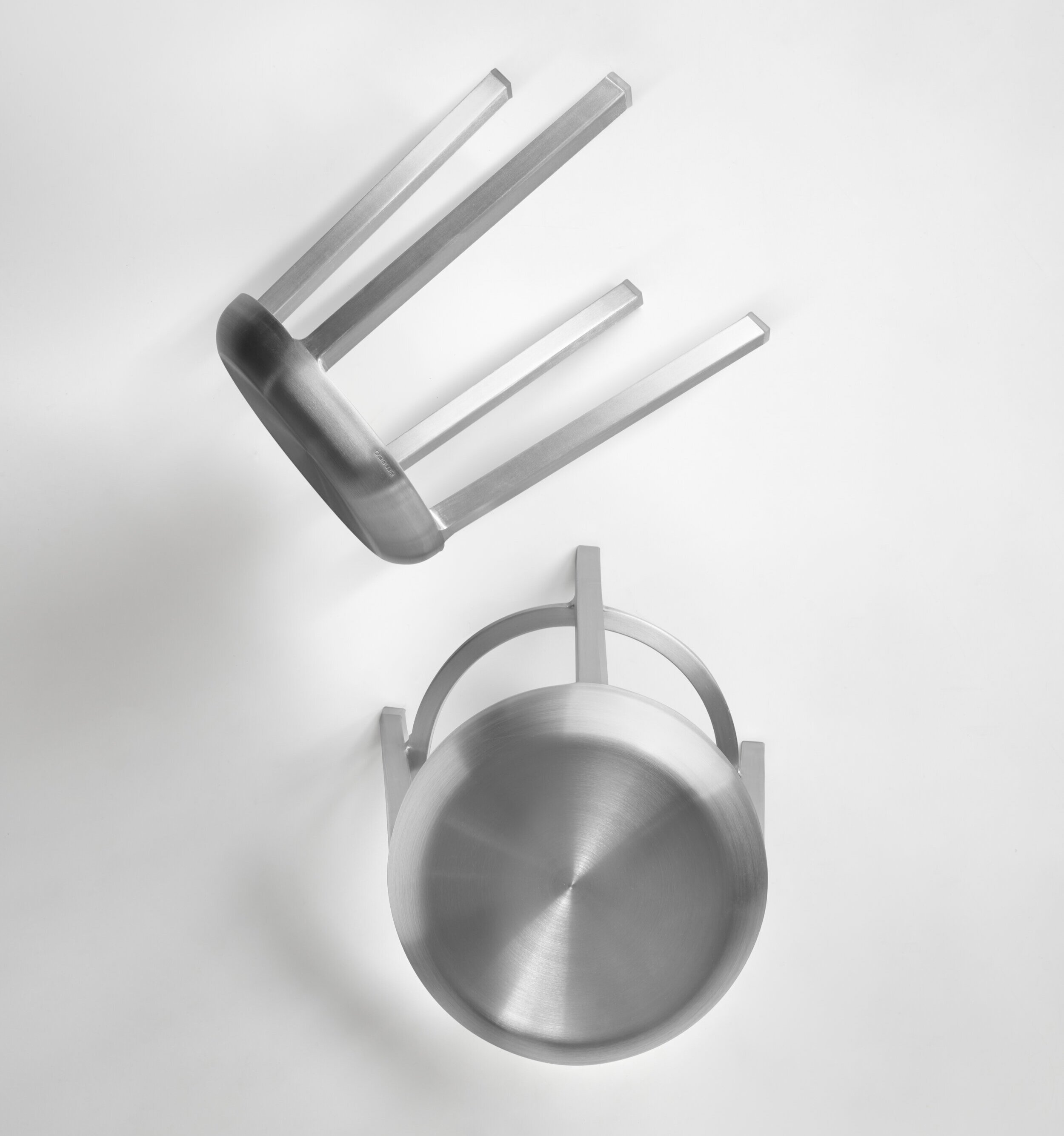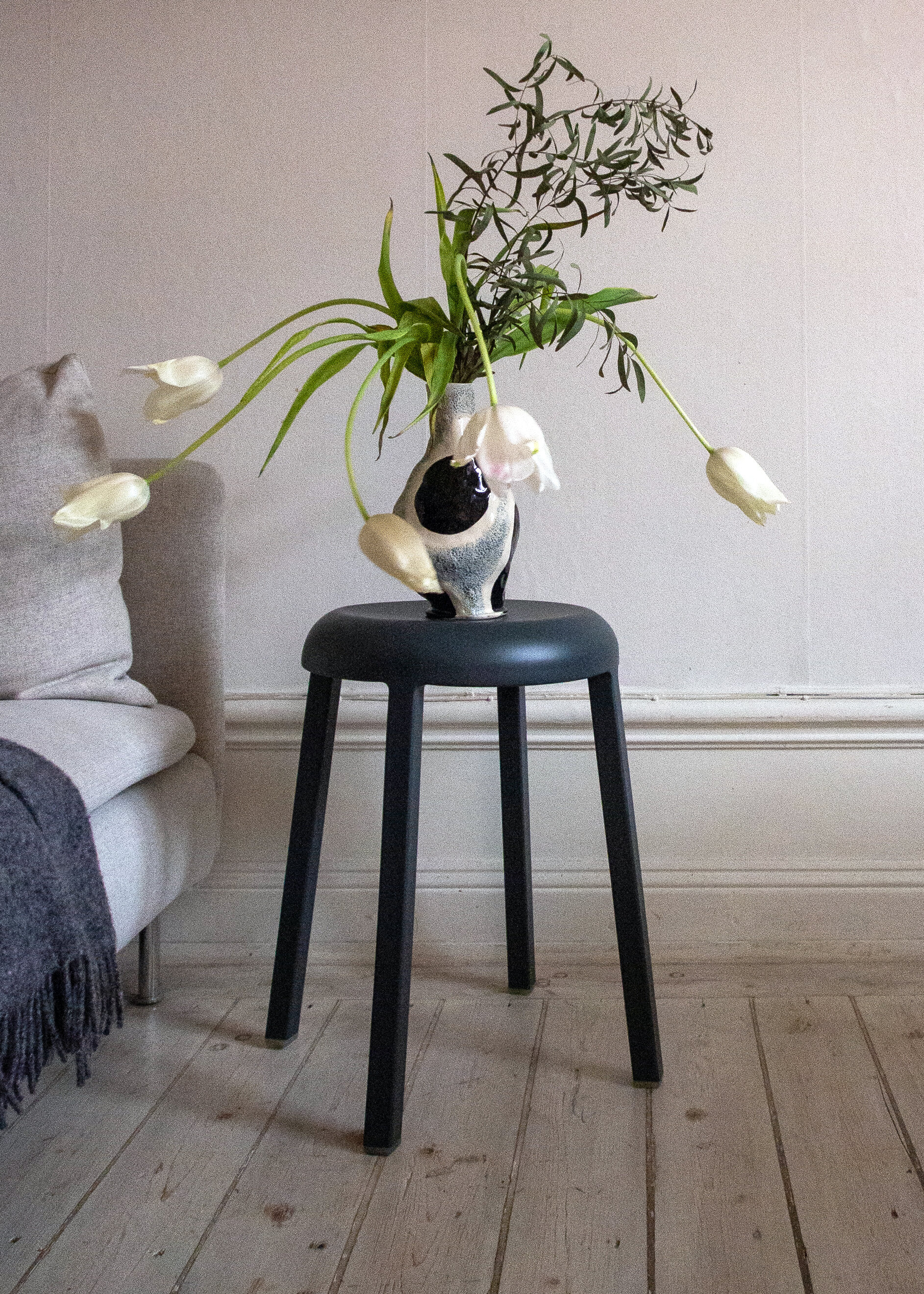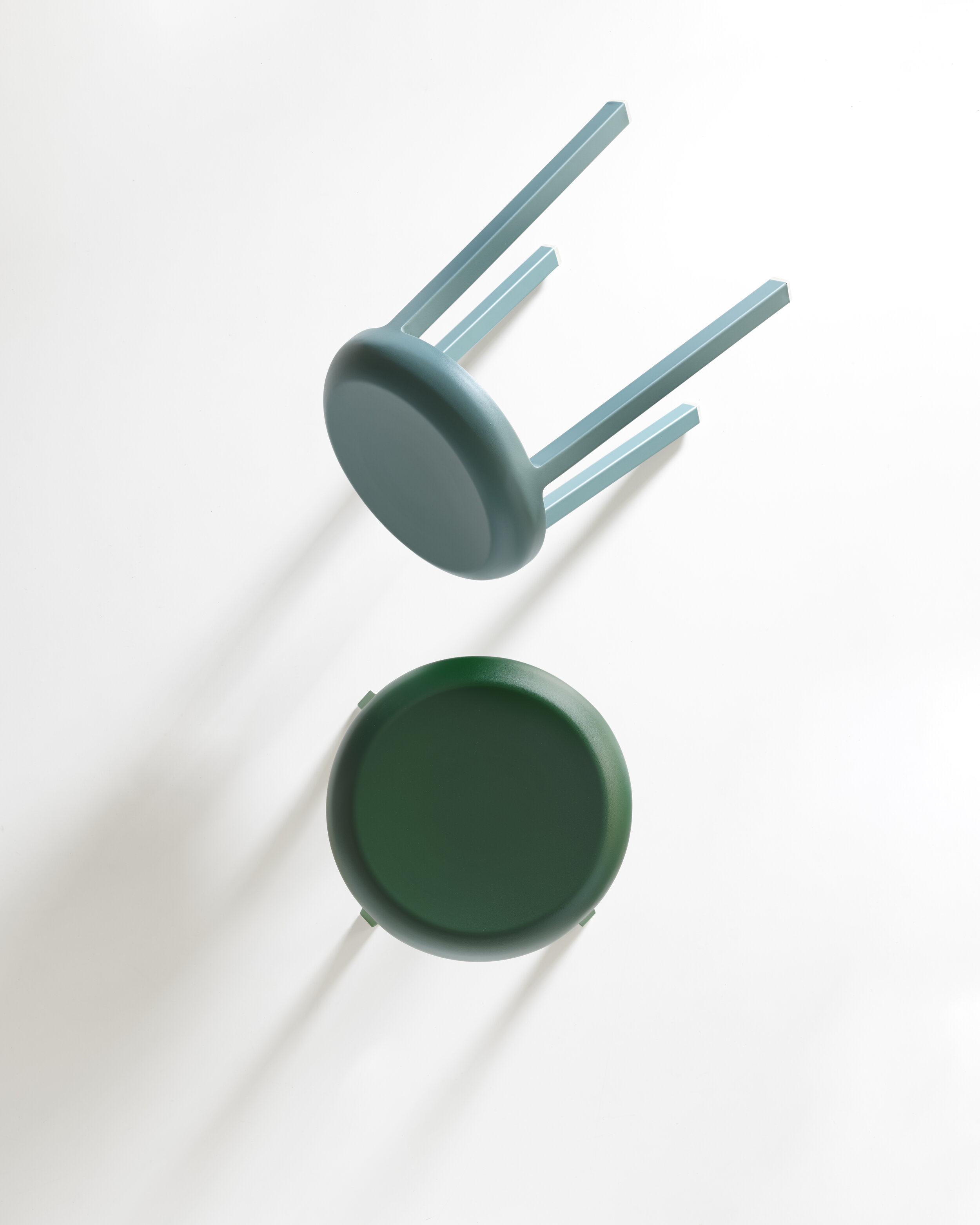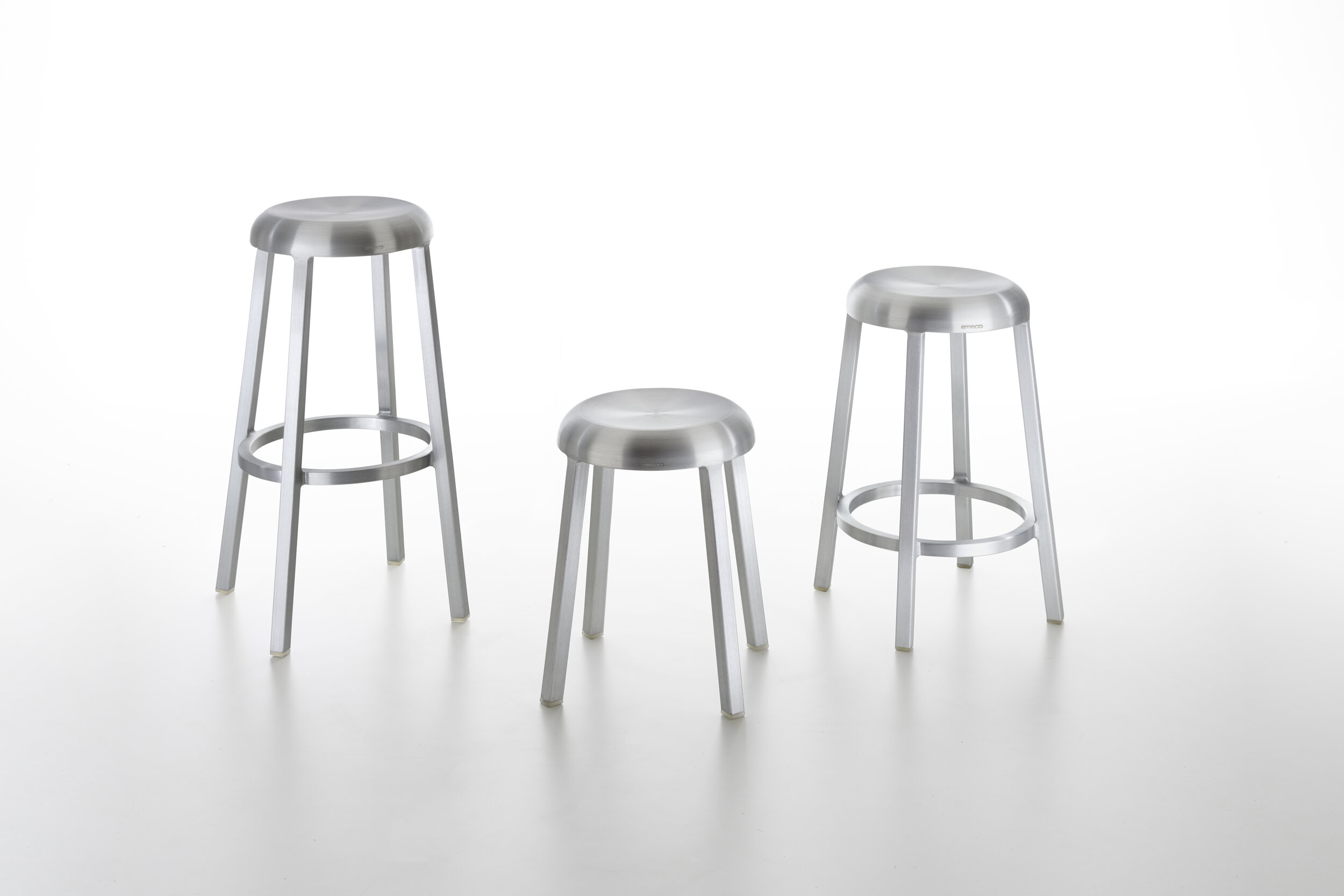
Curator Selects
Naoto Fukasawa
A conversation with the celebrated designer about Za, his new design for American furniture maker Emeco.
Interview by Dan Golden
“My design philosophy is based on the belief that the best objects are thoughtfully designed, but not over-designed, and they are meant for everyday use.”
— Naoto Fukasawa
Dan Golden: Hi Naoto. I’m thrilled to connect and talk with you about your new design for Emeco. Please give me a bit of background on the collaboration.
Naoto Fukasawa: The collaboration with Emeco happened gradually and very naturally over six years. Gregg Buchbinder (Emeco’s CEO) had seen and appreciated the Super Normal exhibition that I did with Jasper Morrison in Tokyo in 2006, and I already knew the Navy chair when we first met. I first encountered the Navy chair when I lived in San Francisco in the ’90s. It is a strong, simple icon, a real symbol of the American culture. It was one of the big reasons I wanted to work with Emeco. I wanted to make a Super Normal design that could fit into the Navy chair family.
Did you visit Emeco’s factory in Pennsylvania? If so, what were your impressions of the factory and company/brand?
Yes. When I visited the Emeco factory in Pennsylvania, I was very impressed that all of the manufacturing is done completely by hand. I thought it was a production line with machines, but it’s actually not. It’s rare to find a company that focuses so much on craftsmanship today. I was also amazed by how lightweight the products are, despite being very strong and made of metal.
With Za, I saw that everyone was really excited about the process of making it. I think that joy is embedded in the stool, and it’s part of what makes it a great product for everybody.
The Za design seems like it has always existed—an instant design classic. How did the design come to you?
I have always been inspired by the timeless design of Emeco’s Navy chair. I love the humble shape and the quality and warmth of the hand-brushed recycled aluminum. My idea was to create a piece that could almost be part of the Navy family, like a little brother or sister, but with its own personality. I thought there was already a round stool in the collection—I could almost picture it in my mind. But when I discovered that it did not exist, I was so happy because that meant I could design one.
“My idea was to create a piece that could almost be part of the Navy family, like a little brother or sister, but with its own personality.”
What was the process of developing Za, from initial ideation through prototyping?
Once I had the idea for a round stool, I drew some rough sketches and we made a 1:1 3D model. In this step, you can see more clearly what details need to be changed or refined. It is very important to think intuitively about how people will unconsciously interact with the stool.
Since this shape did not exist yet in the Emeco catalog, they had to develop some new tools and techniques for cutting, shaping, and finishing the round seat. The rest of the process is just like how they make the Navy chair. There is no hardware on the stool, actually, all of the joints are welded together to create one monolithic piece. It also gets treated with a hot salt bath and baked in a special oven, so the aluminum is very strong. Emeco guarantees it for life. The whole process takes 77 steps and is all done by hand.


How would you say the Za design fits within your larger body of work and approach/vision as a designer?
My design philosophy is based on the belief that the best objects are thoughtfully-designed, but not over-designed, and they are meant for everyday use. It’s not always about creating a strong impression. This is the idea behind Super Normal design, which I conceived with Jasper Morrison in 2006. I strive to create functional objects that are so simple and friendly, people subconsciously gravitate towards them.
Za means “a place to sit” in Japanese, and I think this captures the spirit of my design philosophy. Za looks and functions like exactly what it is. There are very subtle but intentional design features—like a footrest and a raised rim that keeps you centered—that make it so easy and comfortable to use, they almost go unnoticed by the user. The stools are also very light, so they are movable and adaptable to our natural behavior. People can create different ways to use it, maybe as a seat or a small table. Za is a really friendly object that makes your life rich and happy.
All images Courtesy of Naoto Fukasawa and Emeco
Special thanks to Emeco and Novità PR for making this interview possible












